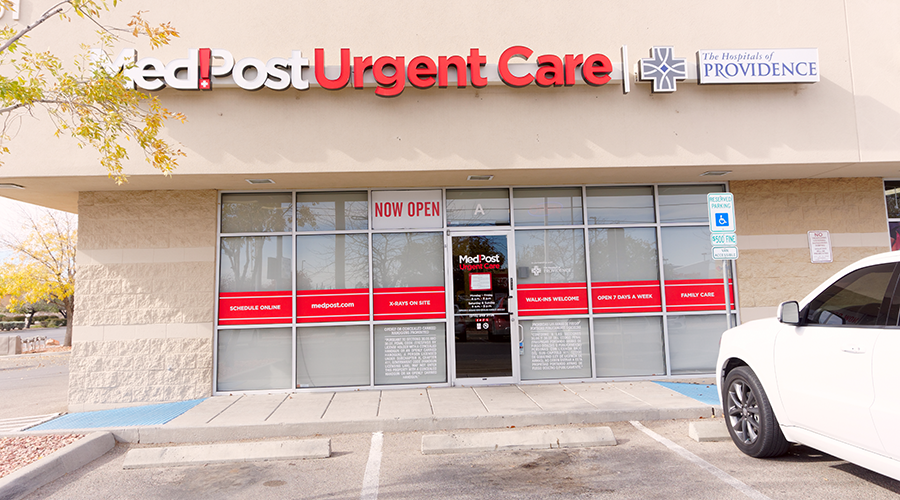With an array of moving parts, healthcare facilities typically revolve around their internal operations, which can create a sense of disconnection from the communities they are meant to serve. The harsh reality is that one-half of the world's population still lacks proper healthcare access, transforming healthcare from a mere necessity into a privilege.
Introducing third spaces into the healthcare sector can move the industry beyond traditional care in a human-centric way and bring healthcare into communities that need it most.
Alternative care
One promising avenue toward this transformation involves the increased number of alternative care sites, a trend that shows no signs of slowing down. Recently, there has been a shift from conventional large-scale hospitals to alternative care locations. This transition has been motivated by various factors, including rising healthcare costs that emphasize the need for cost-effective alternatives.
Advances in ambulatory surgical techniques also have made it possible to conduct non-emergency procedures outside the conventional hospital setting, enabling patients to recover at home with reduced expenses. Because of this advance, integrating technology, including telemedicine, remote monitoring systems, robotics and autonomous vehicles, is profoundly reshaping the healthcare landscape and offering diverse options beyond traditional healthcare.
The transformation of healthcare into a more accessible and patient-centered model is not just a matter of medical advancement. It is a societal imperative. As healthcare becomes more community-centric, it has the potential to address long-standing health disparities, improve the well-being of underserved populations, and drive economic growth. It falls upon the healthcare industry to contribute to resolving societal challenges, particularly in health equity, through thoughtful design of healthcare environments.
This shift is already occurring with the surge of outpatient clinics and urgent care centers in retail environments. Micro-hospitals are emerging in rural areas, offering an alternative to distant, massive hospitals. The rise of telemedicine and virtual medicine facilitates access to healthcare professionals from any location via personal devices.
Ensuring access
While telemedicine can address healthcare deserts and underserved regions, it is important to acknowledge that it is not universally accessible. One in three people globally have never even used the internet, let alone have reliable access at home. The healthcare sector can address this digital divide by establishing community medical centers in high-traffic areas where people can access telemedicine and in-person care hybrid options.
One innovative approach is the integration of telemedical checkups into local gas stations, enhancing access to essential healthcare services for low-income communities. Similarly, healthcare centers can be placed on the ground floors of residential buildings after thorough research and community input to determine suitable locations. Criteria such as walkability, broadband connectivity, extended hours and safety should guide the selection of these sites.
Making a transformative shift, healthcare is evolving to serve the population better. Advanced automated vehicles — especially those capable of tasks without human intervention, including delivering prescriptions, conducting virtual screenings, administering basic vaccinations, and distributing medical supplies — are revolutionizing healthcare accessibility. The integration of innovative technologies and the use of artificial intelligence are facilitating more convenient and personalized patient care, potentially bringing significant value to the industry.
The design challenge
These changes within the healthcare sector provide an opportunity to introduce customer service into the patient journey and alleviate the pressure on healthcare professionals. Designers face the challenge of creating spaces that support healthcare professionals in this increasingly digitized landscape while enhancing in-person care experiences through complementary online services. This shift prioritizes collective health, the welfare of communities, and the growth of businesses — allowing healthcare, once driven by internal focus, to extend its reach.
The evolution of healthcare is not only about reshaping physical spaces and leveraging technology but also about fostering a cultural shift in the way people perceive and prioritize healthcare. The future of healthcare should prioritize preventive measures and patient education, reducing the need for extensive treatment in the first place. By promoting wellness and proactive health, designers can further bridge the gap in healthcare access where the goal is not just to treat illness but to prevent it, promoting a healthier and more equitable society.
The rise of alternative care sites, the integration of technology and the shift toward community-centered healthcare are promising developments that can make healthcare more accessible and human-centric. Careful planning and inclusive approaches are crucial to ensure these changes benefit all individuals, regardless of location or socioeconomic status. By embracing these innovations and continuing to adapt, the healthcare sector can move closer to providing universal healthcare access and a comprehensive healthcare experience for everyone.
Michael St. Clair and Matthew Kennedy are associate principals and senior medical planners with Arcadis.

 Building Sustainable Healthcare for an Aging Population
Building Sustainable Healthcare for an Aging Population Froedtert ThedaCare Announces Opening of ThedaCare Medical Center-Oshkosh
Froedtert ThedaCare Announces Opening of ThedaCare Medical Center-Oshkosh Touchmark Acquires The Hacienda at Georgetown Senior Living Facility
Touchmark Acquires The Hacienda at Georgetown Senior Living Facility Contaminants Under Foot: A Closer Look at Patient Room Floors
Contaminants Under Foot: A Closer Look at Patient Room Floors Power Outages Largely Driven by Extreme Weather Events
Power Outages Largely Driven by Extreme Weather Events